Building Canine Athletes: Flexibility
When building your canine athlete’s conditioning and exercise plan, it’s important to consider the strategic implementation of stretching exercises. Promoting flexibility that allows dogs to utilise their full range of motion effectively improves their biomechanics and prevents other parts of the body from having to compensate.
What’s Flexibility in Dog?
A physical conditioning program can be divided into four main areas: strength, endurance, balance and flexibility. A dog with all these segments equally developed will be able to adapt to different tasks and their intensity and ultimately show better athletic results. These are, for example, agility dogs.
At the same time, well-developed strength, endurance and flexibility in dogs mean that the risk of injuries is lower, and if they do occur, the dog's body will cope with them more easily and recover faster.
Flexibility refers to the range of motion in joints. If the range of motion is reduced, the dog will have less strength and ability to perform the given action. In other words, the results of dog training will be weaker, and on the other hand, the risk of overexertion and injury will grow. Inflexible joints lead to faster muscle fatigue as, in that case, muscles are used more to compensate for the lack of flexibility. If this kind of physical stress is long-lasting, it can result in muscle imbalance and other health issues.
Why is Flexibility Important for Canine Athletes?
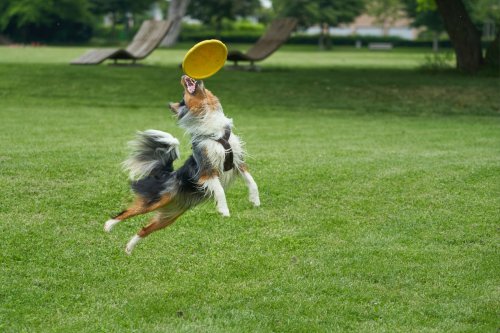
Dogs are asked to perform many athletic feats for competitions, work, and fun. To do this, they need to fit and be flexible. Flexibility allows the body to move freely through the full range of motion, which often declines with lack of exercise, injury, or aging.
When flexibility is compromised, it affects the ability of dogs to perform; dogs may see a decline in their performance or not reach their performance maximum.
Scar tissue is a significant inhibitor of flexibility, putting excess strain on surrounding tissues. If your dog has had an injury or surgery in the past, they likely have scar tissue. To avoid compensatory stresses, it's essential to address these issues, and manual therapies such as Canine Bowen Therapy and Canine Osteopathy are great modalities to support the release of tissue adhesions that limit flexibility in your canine athlete or pet dog.
Determining the Level of Flexibility in Dogs
Since there are several planes in which joints move, determining your dog's level of flexibility or range of motion takes an expert eye. However, you, the owner, can get a baseline understanding of your dog's ability to move freely by having it perform some dynamic tests and observing how it moves.
A simple flexibility exercise test uses a cone, and, with the help of a healthy treat, your dog is encouraged to wrap around the cone—first to one side, then to the other. Observe to what extent your dog can wrap around the object and whether its abilities are equal on both the left and right sides. Take note of the distance between the cone and your dog on each side. Does your dog wrap around the cone in a wide circle one way and very close to it the other? This can indicate that its flexibility level is uneven on the left and right sides.
Many parts of the body can impede flexibility, and the body is designed to move in a vast number of ways, so if understanding your dog's flexibility is important to you, then contact a canine fitness professional who specialises in canine biomechanics.
Incorporating Flexibility Training Into Dog Routine
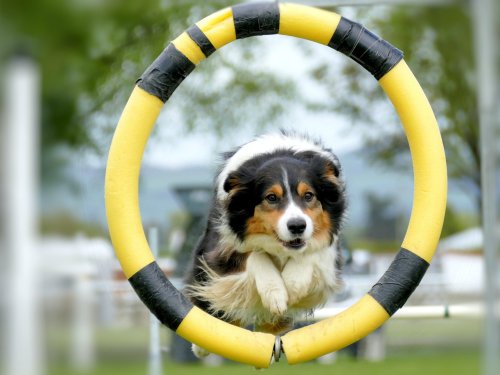
Of the three conditioning areas (strength, endurance, and flexibility), flexibility is the one that most often receives the least attention or is altogether ignored. Yet, the initial stage of adding flexibility to your dog doesn't have to be demanding at all. Although care should be taken in how and when flexibility exercises are performed, getting individualised advice relevant to your dog is essential.
Before conducting flexibility exercises, the body should be fully warmed up; this ensures that all the fluids within and around the joints are at the optimal temperature. It is never advised to perform flexibility exercises when the body is cold.
It's also essential to avoid performing end-of-range stretching immediately before explosive exercises such as agility, disc-dog, flyball, etc. Flexibility is something that should be gradually incorporated into a canine fitness training program to improve biomechanics.
You can reduce the risk of injury by ensuring that the body is sufficiently warm before stretching, building flexibility over time, and avoiding end-of-range stretches before explosive feats of athleticism. Therapeutic treatments that increase or improve joint range of motion should be followed by 24-48 hours of controlled exercise; this advice can also be applied after conducting strong flexibility exercises or stretching, which is why flexibility is something to be gained gradually.
Exercises to Increase Flexibility in Dogs
The first step in incorporating flexibility exercises into your dog's routine is to get their body warmed up. Start with a 5-minute walk building into a light jog, then check your dog, is their mouth shut, or open, or is their tongue inside their teeth, hanging to the front or to the side?
A dog who is warmed up should have a slightly open mouth with a tongue sitting behind their teeth. If the tongue starts to fall forward of the teeth or is off to the side, then they are likely a little too warm.
The warm-up should slightly raise the body temperature and increase the heart rate, this prepares the body for flexibility training. Add in some body awareness exercises to increase proprioception awareness, and then build in your flexibility exercises.
If it wasn't clear already; always remember to be extra careful with manual stretching (and leave that to the experts) so as not to injure the dog you are working with—the emphasis is on gentle movements! We can help you build a fitness program that improves your dog's flexibility contact us to learn more.
Static vs Dynamic Flexibility Exercises
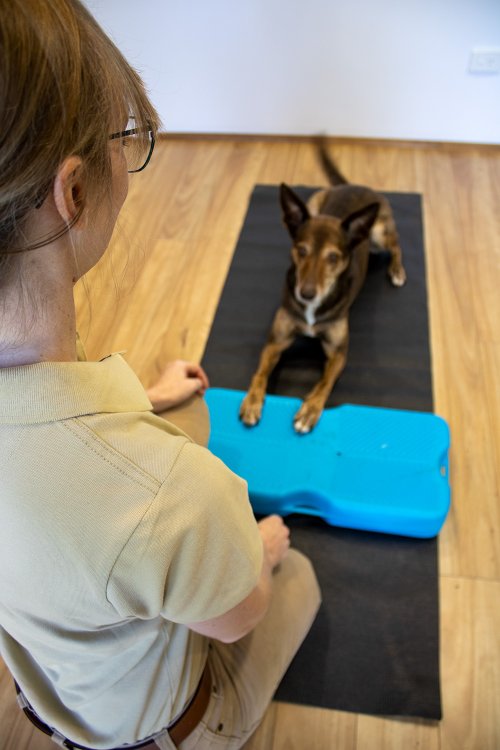
Flexibility exercises can be broken down into static exercises, which are held for several seconds, and dynamic exercises, which are more like pulses. Knowing the difference and how and when to incorporate both is important. Certified Canine Fitness Professionals are experts in canine fitness and can help you build the right program for your dog.
Each dog has a unique body type, shape, and fitness goal. So, what is right for one dog may not be suitable for your dog. Flexibility is one of those areas where you want to get it right. If you want to get started in flexibility, then build up gradually and focus on dynamic exercises that gently encourage the body to move freely.
Wrapping around a cone, as discussed earlier, is a good dynamic exercise to encourage lateral spine flexion. Another dynamic exercise that improves flexibility is walking or trotting over cavaletti's aids; you can adjust the distance between each one to promote a gentle lengthening of their gait. These active stretches should gently build on your dog's current physical activity and promote positive change in the muscular skeletal system.
When focusing on static flexibility exercises, there should be a strong focus on encouraging the proper form. Your dog moves into a specific position and holds it, this takes skill and a good understanding of canine biomechanics to get right. Getting a conditioning plan that's right for your dog is best.
Cooling Down
Just as every workout or dog sport should start with a warm-up, there should also be a cool-down period at the end. Since you've been working on flexibility, keeping the cool-down controlled is important.
The purpose of the cool-down is to gently lower the heart rate and help the nervous system become aware of the increased range of motion. The formula for a good cool-down routine includes gradually reducing exercises, such as a short trotting that turns into walking.
During the cool-down walk, allow your dog to gradually become calmer until you notice that its breath has also dropped to a normal level. Offer your dog a few sips of water, as this will help them cool down and rehydrate. Try to avoid letting them gulp down large amounts of water all at once though. If more of the water ends up on the ground and around their muzzle, then that is fine, they are likely using the water to cool themselves rather than drinking excessive amounts.
You can also massage your canine athlete, especially if the exercise was very intense, this will further relax your dog's muscles and joints
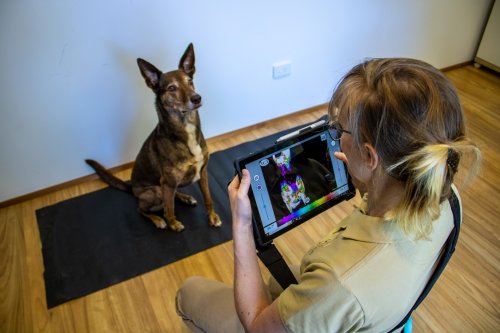
During the cool-down period, observe your dog's movement; they should have a free-flowing gait free of stiffness. If you do notice any gait abnormalities or stiffness it could be a sign of injury. Get them booked in for a thermal imaging consult which you can then discuss with your sports vet or canine osteopath.
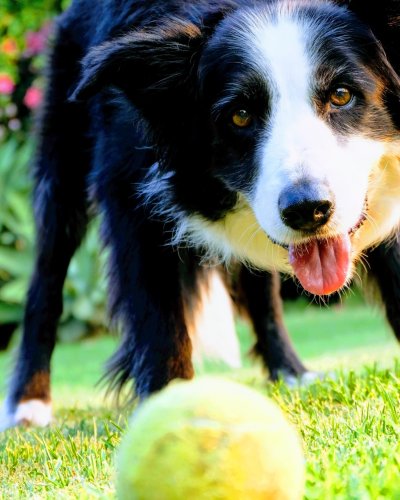
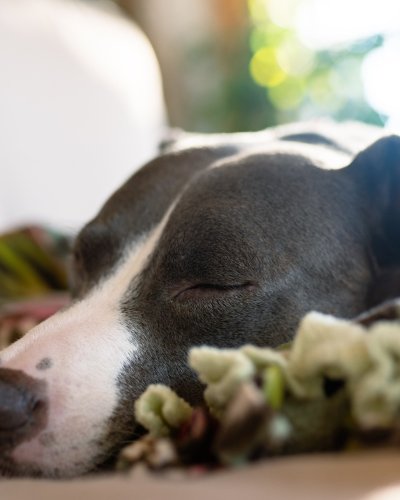
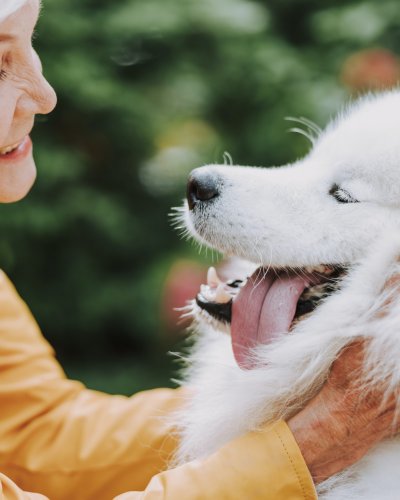


Leave a comment